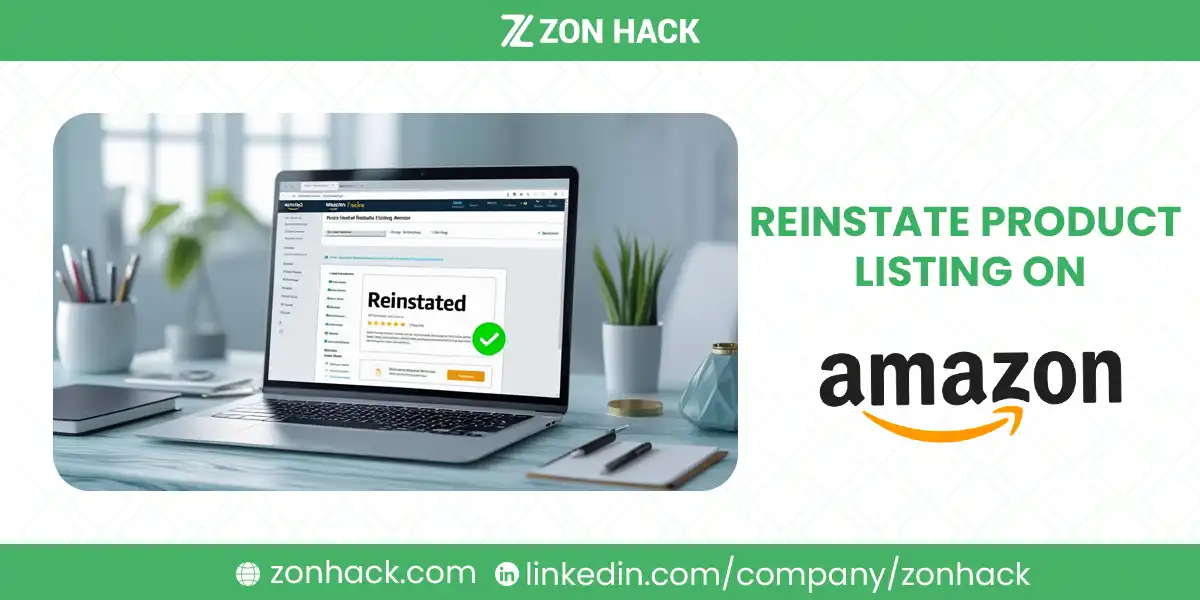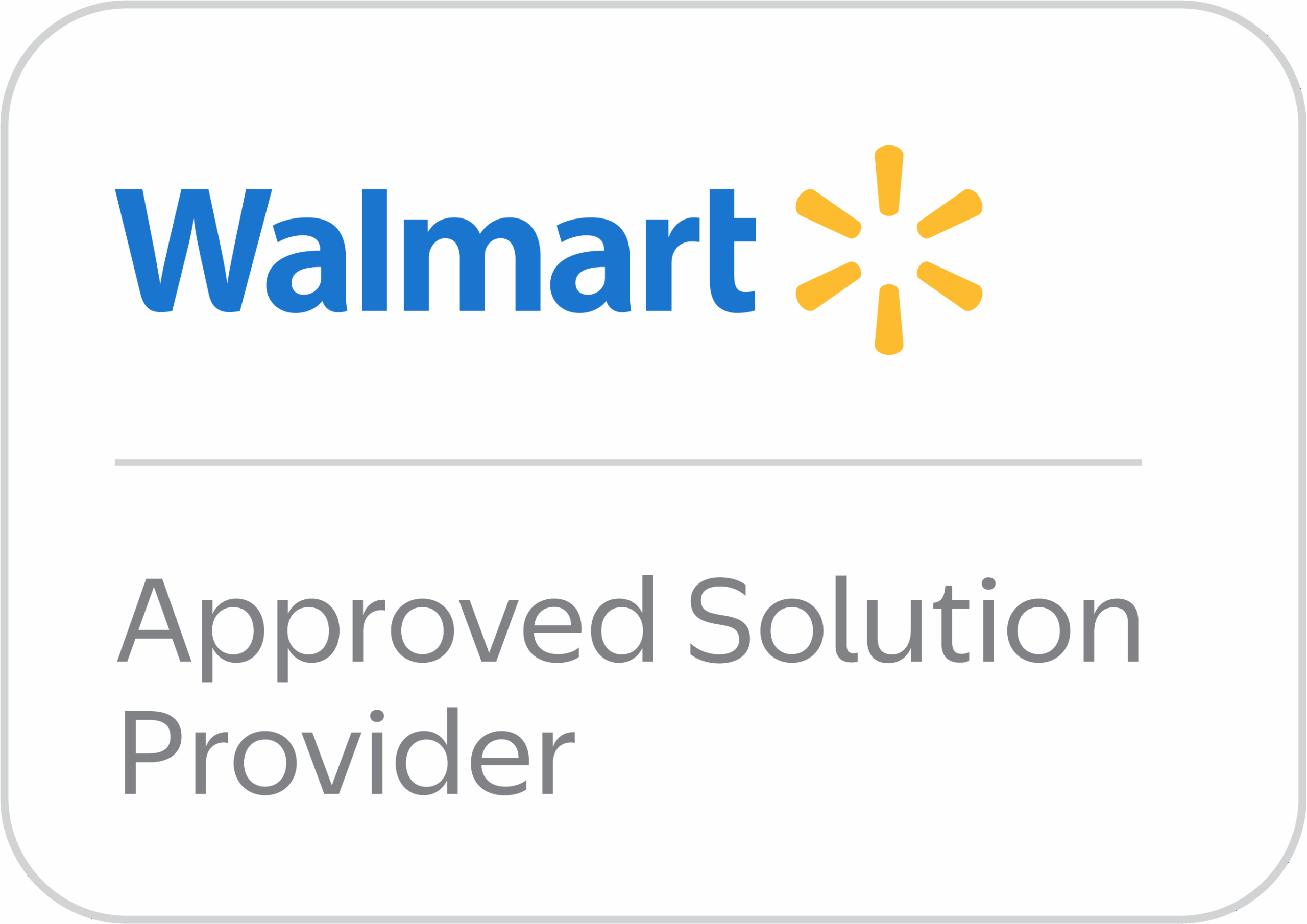Powered by ZonHack — Experts in Amazon Listing Reinstatement & Account Recovery
When an Amazon product listing disappears, sellers often feel panic.
Visibility is gone. Sales stop. Revenue drops.
But what happened?
Product listings can be removed, suppressed, or blocked for many reasons—and each one requires a different strategy to fix. Whether it’s a policy violation, a keyword compliance issue, or a false flag triggered by Amazon’s bots, the path to reinstatement isn’t always clear.
At ZonHack, we’ve seen it all. We’ve helped sellers recover thousands of listings, even in high-stakes, multi-ASIN takedowns. This guide unpacks what each type of listing issue means, why Amazon takes action, and most importantly, how to get your product back online fast.
Understanding Amazon Listing Status: What Each Term Really Means
Detail Page Removed
This means your listing has been pulled from customer view entirely. It won’t appear in search, and even if a customer has a direct link, they’ll hit a dead end.
Why it happens:
- Policy violations (e.g., restricted products, banned substances)
- IP complaints
- Safety concerns flagged by Amazon or customers
- Technical listing errors
Listing Suppressed
Suppressed listings are still technically “live” but hidden from Amazon’s search results.
This usually results from data compliance issues. Amazon wants sellers to fix missing or incorrect information—images, titles, descriptions, etc.
You’ll often see this flagged in your Manage Inventory > Search Suppressed Listings tab.
Listing Blocked
This is more serious. A blocked listing will show a red or yellow icon in your dashboard.
- Red icon: The listing is permanently blocked. You may be asked to remove inventory.
- Yellow icon: The listing is inactive but can be reinstated if you resolve the issue.
Blocked listings often require detailed appeals and supporting documentation.
Closed Listing
This one is seller-initiated. If you’ve marked a listing as “closed” (say, during an optimization cycle or restocking), you can reactivate it anytime. It’s not a penalty—just a pause.
Why Amazon Removes, Suppresses, or Blocks Product Listings
Understanding the cause is half the battle. Here are the most common triggers:
Policy & Compliance Violations
These are the hardest to fix because they often require legal or regulatory documentation.
Examples:
- Selling unapproved supplements or medical products
- Making false claims like “FDA approved”
- Violating restricted product guidelines (e.g., weapons, pesticides, CBD)
Amazon is strict here. Repeat violations can get your entire account suspended.
Intellectual Property & Trademark Claims
IP complaints can be:
- Legitimate: You used a protected brand name or copyrighted image
- False: A brand filed a claim to reduce competition
You’ll need invoices, authorization letters, or retraction statements from the rights owner. Amazon usually sides with the rights holder unless you prove otherwise.
Misleading or Incomplete Product Information
This happens when listings contain:
- Misleading descriptions or exaggerated features
- Missing required data (dimensions, ingredients, warnings)
- Banned formatting (like HTML, all caps, keyword stuffing)
Amazon’s bots flag many listings for these.
Catalog or Listing Integrity Issues
Common cases include:
- Duplicate ASINs for the same product
- Incorrectly merged or split variations
- Mismatched UPC/EAN data
Fixing this might involve brand registry support or flat file uploads.
Pricing, Inventory, and Performance Problems
Amazon watches for:
- Price gouging or violating MRP policies
- MAP policy violations
- Listings that go Out Of Stock (OOS) too often
- Excessive returns or bad reviews
These trigger Buy Box loss, suppressed status, or even blocks.
Technical Glitches or Bot Errors
Not all flags are accurate. Sometimes a product gets caught by Amazon’s algorithm by mistake.
False positives may result from:
- Backend keyword flags (e.g., banned words in bullets)
- Mismatched compliance tags
- Server-side ASIN errors
ZonHack frequently resolves these within 48 hours.
How to Identify the Listing Issue
First, don’t jump into appeals. Start by understanding why your listing is down.
Here’s how to start:
- Check Manage Inventory. Look for status icons: Active, Inactive, Blocked.
- Use the Search Suppressed Listings filter.
- Go to Performance > Account Health > Policy Compliance.
- Read any messages or alerts.
- If there’s a “Fix Issue” button, click it for clues.
- Check your email for subject lines like “Listing Removed” or “Action Required”.
- Use seller tools like Airboxr or ZonHack’s custom alerts for real-time issue detection.
Still unclear? Contact Seller Support with the ASIN and ask for specifics.
First Steps After Discovery: Don’t Panic, Plan
Rushing to submit an appeal is the worst thing you can do.
Here’s the better approach:
- Stay calm. Reacting emotionally or too quickly often backfires.
- Read the notification slowly and thoroughly.
- Identify what kind of violation it is.
- Review your listing: Is there a claim that could have triggered a policy violation?
- Check if other sellers of the same product are still live.
- Begin gathering documents: invoices, brand authorization, compliance paperwork.
ZonHack often spends 24 hours just diagnosing before writing a single sentence of the appeal.
The Reinstatement & Appeal Process Explained
Once you’ve diagnosed the issue, it’s time to fix it. Each listing status has its own path:
Fix Listing Data or Policy Issues
For suppressed listings or minor blocks:
- Add required fields (e.g., missing size, image, bullets)
- Remove prohibited words
- Update backend keywords to eliminate risk flags
- Upload compliance documents if requested (COA, test reports, etc.)
Address Specific Policy Violations
If it’s an IP or policy violation:
- IP Complaints: Provide valid invoices, authorization letters, or request a retraction
- Restricted Items: Upload lab test reports, MSDS, safety certificates
- Customer Complaints: Review returns and feedback, then improve the listing
Submit the Appeal
Go to Account Health > Product Policy Compliance
- Click the “Appeal” button
- Choose to fill in a form or upload a Plan of Action (POA)
- For suppressed listings: use the “Fix Issue” button
- Label all files clearly (e.g., “Invoice-Amazon.pdf”, “POA.docx”)
Monitor Outcome
- Most appeals get responses in 24–72 hours
- Complex cases or documentation reviews may take longer
- If rejected, review the rejection note carefully
- If vague, consider escalating to internal teams or using professional help
Writing a Winning Plan of Action (POA)
The POA is your opportunity to demonstrate to Amazon that you’ve identified the issue, taken corrective steps, and implemented measures to prevent recurrence.
Structure of a Strong POA
Root Cause: Clearly explain what led to the issue. For instance, if a product was suspended due to an IP complaint, detail whether it was due to unauthorized use of a trademark or a misunderstanding.
Corrective Actions: Outline the steps you’ve taken to rectify the problem. This could include removing infringing content, obtaining proper authorization, or updating product information.
Preventive Measures: Describe the measures you’ve implemented to ensure the issue doesn’t happen again. This might involve staff training, regular audits, or using specific tools to monitor compliance.
Best Practices
- Be factual and concise: Avoid emotional language; focus on facts and solutions.
- Take responsibility: Acknowledge any mistakes and show commitment to compliance.
- Provide supporting documents: Include invoices, authorization letters, or test reports as evidence.
- Customize your POA: Avoid generic templates; tailor your response to the specific issue.
Common Appeal Mistakes to Avoid
- Submitting appeals hastily: Take time to understand the issue before responding.
- Using generic templates: Amazon prefers personalized and specific responses.
- Omitting key documents: Ensure all necessary evidence is included.
- Being defensive: Maintain a professional tone and focus on solutions.
- Ignoring feedback: If Amazon provides feedback, address it thoroughly in your revised appeal.
What to Expect After Submitting Your Appeal
- Accepted: Your listing is reinstated, and you can resume sales.
- Rejected with Feedback: Amazon provides reasons for rejection; revise your POA accordingly.
- Rejected without Detail: If no specific feedback is given, consider seeking professional assistance to navigate the next steps.
In cases of repeated rejections or complex issues, ZonHack specializes in handling escalations and persistent rejections, offering tailored solutions to get your listings back on track.
When to Seek Professional Help
Consider professional assistance if:
- Appeals are rejected multiple times: Repeated failures may indicate underlying issues that need expert analysis.
- Dealing with complex IP or legal matters: Navigating legal intricacies requires specialized knowledge.
- Receiving unclear responses from Amazon: Professionals can help interpret and respond effectively to ambiguous feedback.
ZonHack’s Amazon Listing Reinstatement Service offers:
- Root-cause analysis: Identifying the underlying issues affecting your listings.
- Custom POA drafting: Crafting tailored appeals that address specific concerns.
- Evidence compilation: Gathering and organizing necessary documentation.
- Direct support & escalation assistance: Guiding you through the appeal process and liaising with Amazon on your behalf.
- High success rates with challenging cases: Leveraging experience to resolve complex reinstatement issues.
How to Prevent Future Listing Suspensions
Ongoing Best Practices
- Monitor Account Health Dashboard weekly: Regular checks help identify and address issues promptly.
- Stay updated on policy changes: Subscribe to Amazon’s policy updates to remain compliant.
- Use Amazon-compliant tools for listing creation: Ensure your listings meet all requirements.
- Optimize content for compliance: Regularly review and update images, descriptions, and backend fields.
Utilize ZonHack’s Proactive Monitoring Tools
- Receive alerts on suppressed listings: Immediate notifications help address issues swiftly.
- Conduct pre-launch audits: Ensure new listings comply with all policies before going live.
- Access listing health reports: Identify areas for improvement and maintain optimal performance.
- Enhance Brand Content best practices: Optimize your brand’s presence and compliance on Amazon.
Bottom Line
Reinstating a listing is more than just submitting an appeal; it’s about understanding the root cause, taking corrective action, and implementing preventive measures. With the right approach, most listings can be restored. However, speed and accuracy are crucial.
ZonHack is here to assist Amazon sellers in recovering their listings efficiently and effectively, offering expert guidance and support throughout the process.
Frequently Asked Questions
How long does listing reinstatement take?
Typically, responses are received within 24–72 hours. Complex cases may take longer.
Can I recover a listing without invoices?
It’s challenging. Amazon often requires valid invoices or authorization letters to verify authenticity.
What if I don’t know why my listing was removed?
Check your Account Health Dashboard and Performance Notifications. If unclear, contact Seller Support for clarification.
Is it worth appealing a red-flagged blocked listing?
Red flags indicate severe issues. While reinstatement is difficult, it’s not impossible with the right documentation and approach.




